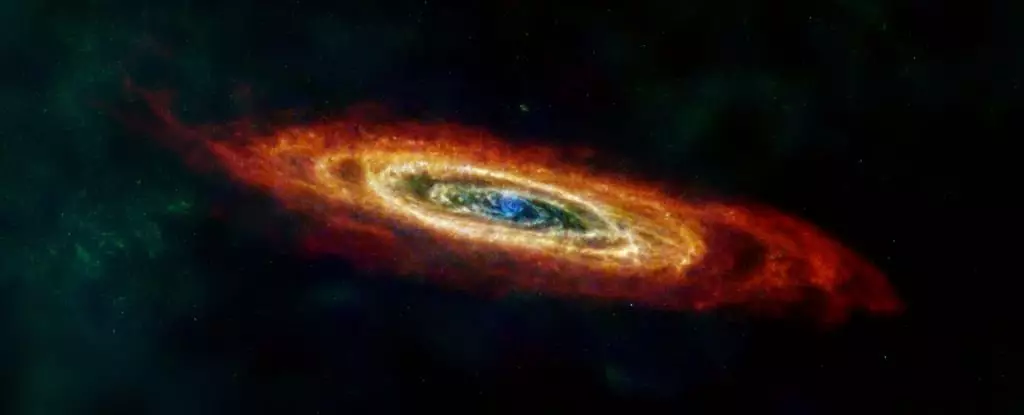Massive stars, particularly those exceeding eight times the mass of the Sun, undergo dramatic transformations in their lifetimes. As these cosmic giants exhaust their hydrogen fuel, they face the inevitable gravitational collapse that usually culminates in violent supernova explosions. Supernovae are not just spectacular cosmic displays; they are critical for the synthesis of heavy elements and play a pivotal role in galactic evolution. Despite the established theory that these massive stars explode at the end of their life cycles, recent discoveries suggest that some may skip this explosive finale altogether, morphing directly into black holes. This revelation fundamentally challenges our understanding of stellar evolution and the intricate processes at play in the cosmos.
The focus of recent research has been on M31-2014-DS1, a massive star located in the Andromeda Galaxy. Unlike typical supernovae, which are characterized by their explosive luminosity, M31-2014-DS1’s story unfolds as an enigma. Initially observed brightening in mid-infrared light in 2014, this star exhibited a period of constant luminosity lasting approximately one thousand days. However, from 2016 to 2019, it demonstrated an unexpected sharp decline in brightness without any accompanying supernova indicators. This behavior raises profound questions about the star’s fate and the physical mechanisms behind such a phenomenon.
Researchers led by Kishalay De from MIT have probed the characteristics of M31-2014-DS1, inferring that it began its life with about 20 solar masses but ended its nuclear burning phase with a mere 6.7 solar masses. Such drastic mass loss suggests that the star underwent significant processes leading to its transformation. Surrounding the star is a dust shell likely formed from ejected material, a typical sign one might expect to associate with a supernova event. Yet, the absence of a coherent optical outburst paints a perplexing picture, suggesting that our traditional models of stellar death require recalibration.
At the heart of understanding stellar death lies the intricate balance between gravitational forces and the outward pressure generated by nuclear fusion. When a massive star’s nuclear fuel depletes, an imbalance occurs, leading to the critical collapse of its core. During this collapse, a process called neutronization occurs, wherein electrons merge with protons to produce neutrons and neutrinos. It is this interplay that is crucial to the phenomenon of supernova explosions.
Typically, the neutrino shock wave produced during neutronization helps induce the explosive expulsion of a star’s outer layers. However, in the case of M31-2014-DS1, the research indicates the absence of a revived neutronic blast. Without this revival, the stellar material failed to propel outward; instead, a significant portion—approximately 98%—of the star’s mass succumbed to gravitational collapse, resulting in the formation of a black hole estimated to be around 6.5 solar masses.
The implications of such findings extend beyond the star M31-2014-DS1 itself. The identification of potentially failed supernovae prompts a reevaluation of the stellar lifecycle catalog. Researchers speculate that between 20% and 30% of massive stars may not achieve a supernova explosion but instead succumb to gravitational collapse. This necessitates that observational strategies be adjusted to account for these ‘non-events,’ as they may provide critical insights into the population of black holes in the universe.
M31-2014-DS1 is not alone in this realm. Its counterpart, N6946-BH1, also provides a framework for exploring these enigmatic cosmic occurrences. Following the confirmation of historical failed supernovae, there is a growing awareness of the implications of such phenomena in understanding the mass distribution of stellar remnants and the processes that govern stellar evolution.
The case of M31-2014-DS1 is a testament to the complexities inherent in astrophysical phenomena. As research delves deeper, it becomes increasingly clear that our comprehension of stellar explosions may conceal multiple layers of intricacy. Future investigations into failed supernovae and their dynamics are imperative, not only to appreciate the life cycles of massive stars but also to grasp the broader implications of these events for cosmic evolution. This fascinating frontier of astronomy invites both skepticism and curiosity, as it challenges established norms about the violent ends of massive stars and their significance in the universe’s tapestry.


Leave a Reply